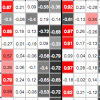Computationally determining the salience of decision points for real-time wayfinding support
Keywords:
navigational aids, wayfinding, geospatial information, human spatial cognition, real-time applications, salience, PageRank, information entropyAbstract
This study introduces the concept of computational salience to explain the discriminatory efficacy of decision points, which in turn may have applications to providing real-time assistance to users of navigational aids. This research compared algorithms for calculating the computational salience of decision points and validated the results via three methods: high-salience decision points were used to classify wayfinders; salience scores were used to weight a conditional probabilistic scoring function for real-time wayfinder performance classification; and salience scores were correlated with wayfinding-performance metrics. As an exploratory step to linking computational and cognitive salience, a photograph-recognition experiment was conducted. Results reveal a distinction between algorithms useful for determining computational and cognitive saliences. For computational salience, information about the structural integration of decision points is effective, while information about the probability of decision-point traversal shows promise for determining cognitive salience. Limitations from only using structural information and motivations for future work that include non-structural information are elicited.

Downloads
Published
Issue
Section
License
Copyright (c) 2012 Makoto Takemiya, Toru Ishikawa

This work is licensed under a Creative Commons Attribution 4.0 International License.
Articles in JOSIS are licensed under a Creative Commons Attribution 3.0 License.
